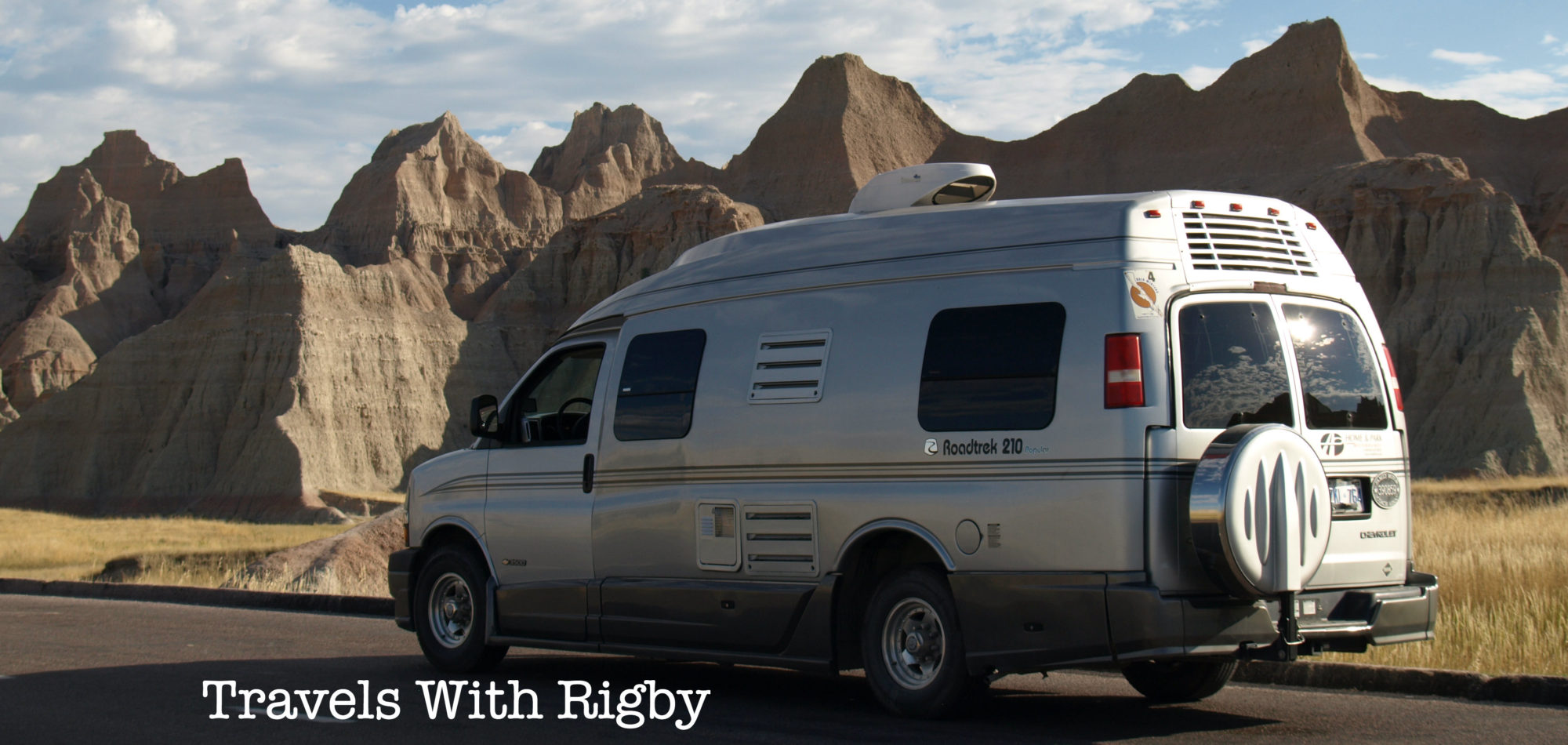Summer is a crazy time for us both – Craig is gigging and we both have all sorts of writing assignments on the go. This translates into very few available days for our camper van travels. We always try to head out for several long (6-8 week) trips in the delicious fall and spring “shoulder seasons” when campsites are only half-filled and the weather still tempts. Shoulder season works the best for our lifestyle.
Read below for two parts: 1. Our Vermont camping trip and 2. What we learned about Class B travel this time around.
1. VERMONT IN THE SUMMER
We’ve been itching to do a trial run in our newly acquired 2006 Roadtrek 210 (we are carrying over the van’s nickname – High Cotton), so we blocked off four summertime days and crossed the border into Vermont. We have a long trip coming up in the fall – exploring U.S. national parks in South Dakota, Wyoming, Utah and Colorado – and really needed to get acquainted with the workings of the “new” van before departing on the Big Trip. 2016 is the centenary of the U.S. National Park System.
The Vermont state parks are lovely – no hookups, so the big rigs stay away and the campgrounds are small, nicely wooded with nightly rates that are very affordable (even with the dollar exchange). It’s Class B heaven.
We hopped around the state, starting with our all-time Vermont favourite, Silver Lake State Park in the hamlet of Barnard, just north of beautiful Woodstock, VT. Silver Lake is compact, the swimming in the small lake is perfect, it’s a 10-minute stroll to the quintessential VT country store in Barnard, a five-minute drive to the trailheads of the Appalachian Trail, and just 15 minutes into Woodstock, home to beautiful New England architecture, the Marsh-Billings-Rockefeller National Historic Site and the time capsule at the Billings Farm & Museum.
From there we travelled east, stopping at the Cabot Cheese outlet – loved the Alpine Cheese and the Special Reserve. Then north to Stillwater State Park, which was nice but a lot like our Ontario Parks, so we are not likely to travel there again, given that we have something very similar (and nice) just down the road from home.
Our final stay was at Grand Isle State Park, on Lake Champlain. It is one of Vermont’s largest state parks but did not seem huge or crowded. The sites were nice, clean and private. But the real find of the trip was the day-use park at Niquette Bay State Park (about 20 minutes north of Burlington, VT). What a fantastic find! It’s a one-mile hike through mature woods to the two swimming spots. We opted for Calm Cove: less crowded, slab rock shoreline, more secluded and – wait for it! …- off-leash dog friendly! Rigby had a blast jumping into the water and swimming about (as did we). There were three of four dogs there at a time – all well behaved with attentive owners. Not a single issue or problem. Niquette Bay is a bit off the beaten track, so fewer people go there, but it was the highlight of our travels.
2. THE CLASS B LEARNING CURVE CONTINUES …
Vermont has hills – small by the Rockies standard but pretty big by Ontario stats. We learned that a Roadtrek 210 is not a car; it is more like a truck so it needs to be driven like one. On the long, winding downhills, this means being judicious with the brakes (or they will overheat – very scary) and shifting to low gears to use the engine to provide some of the braking needed. The advice we received was to power down when cresting a hill to be at the speed you’d like to drive down the hill at – then use the lower gear and brakes to maintain that low speed.
All in all, we are in love with our new High Cotton. It performed flawlessly and we had fun learning the new, upgraded systems – water, dump tanks, sleeping compartment, etc. We also added an external Coleman camp stove with a combination grill/burner bought at Canadian Tire. Our van has an external propane hookup to go directly to a BBQ, so it was super easy. The camp stove is more compact and more versatile than the larger barbecues. Loved, loved, loved it. Cooked and ate outside every day. And we happened to be in Vermont just as corn season was beginning.







